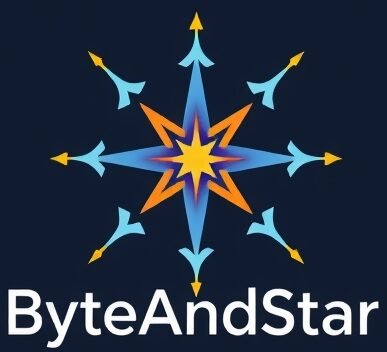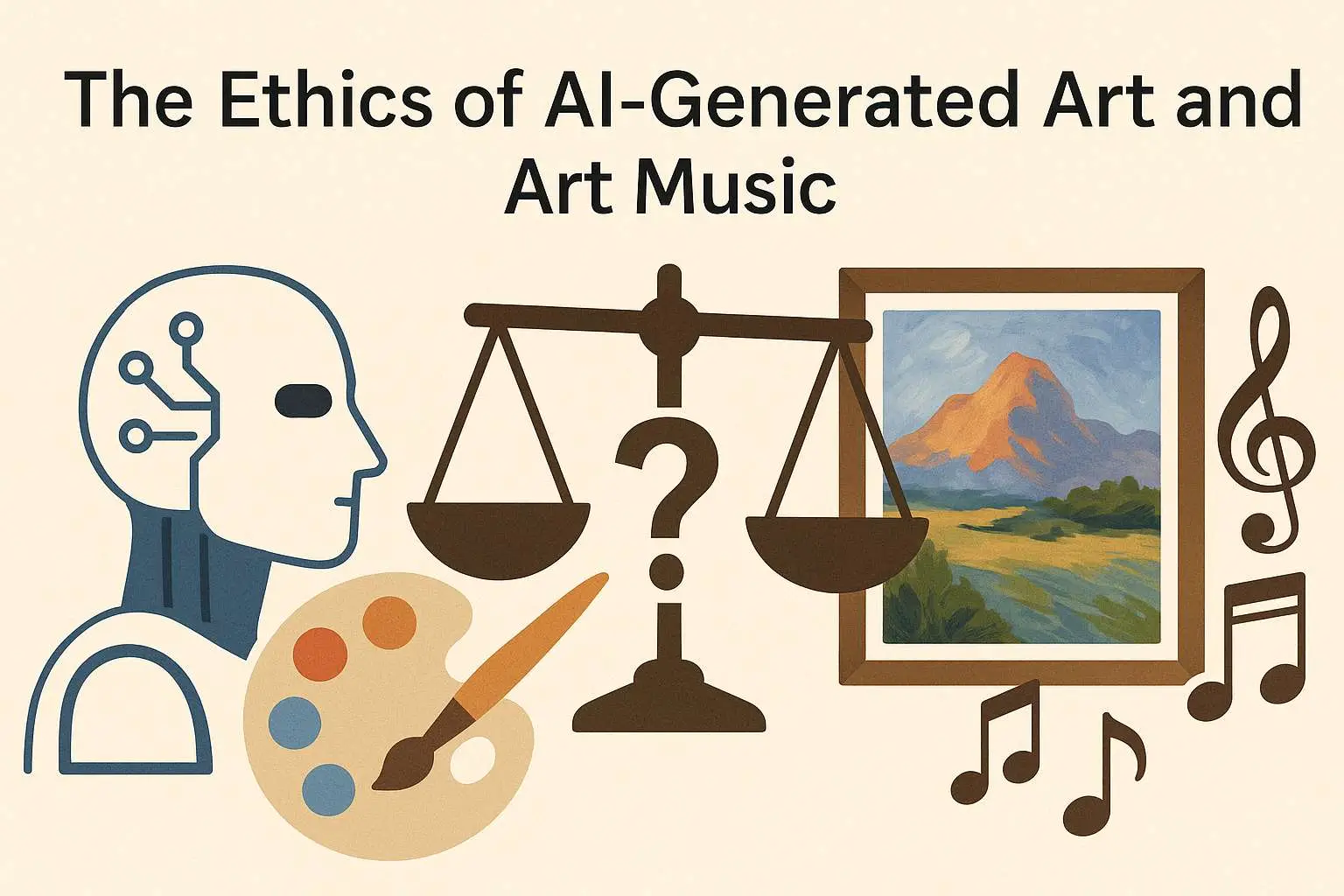Imagine, you’re sipping coffee, scrolling through Spotify, and suddenly stumble upon a chart-topping song. It’s catchy, emotional, and feels like a masterpiece. But here’s the twist—it wasn’t written by a struggling artist or a famous composer. It was born entirely out of an algorithm.
That’s the world we’re walking into, where machines don’t just crunch numbers but also paint, sing, and write. This raises an urgent and fascinating question: what do the Ethics of AI-generated art really mean for us as humans? Is it still art if a machine made it? Who owns it? And does it carry the soul of creativity—or just a clever remix?
🎨 Ownership & Copyright
Here’s the tricky part: when AI creates something, who gets the credit? Is it the developer who coded the system, the user who typed the prompt, or nobody at all? The Ethics of AI-generated art hit a wall here because our copyright laws were written long before machines started “creating.”
Take DALL·E or MidJourney for example. Their outputs live in a legal grey area. Some countries say AI art isn’t copyrightable at all. Others argue the user deserves recognition. But if AI pulls inspiration from thousands of existing artworks without permission—are we celebrating innovation or overlooking plagiarism?
🧑🎨 Displacement of Human Artists
Many artists are asking themselves: Will AI make my craft irrelevant? That’s another big angle in the Ethics of AI-generated art debate.
Imagine spending years perfecting your unique voice, only to discover an AI has cloned it overnight. We’ve already seen controversies—AI-generated songs imitating Drake and The Weeknd became viral hits before being pulled down. If machines can imitate your style in minutes, how do human artists compete?
Some say this will devalue human art. Others believe it forces us to rethink what truly makes art special: the raw emotions and lived experiences that no algorithm can replicate.
🎵 Originality vs. Mimicry
Here’s the million-dollar question: can AI really create? Or is it just remixing patterns from existing data? This sits at the heart of the Ethics of AI-generated art.
AI doesn’t feel heartbreak or joy. It doesn’t dream, hope, or struggle. Instead, it learns by studying billions of samples and predicting what might come next. Critics argue this makes AI art hollow—beautiful on the surface but missing depth. Supporters counter that all art borrows inspiration. After all, even Picasso admitted that creativity involves “stealing.” The difference? Humans bring intention. AI brings probability.
🤖 Bias and Cultural Appropriation
Another thorny issue in the Ethics of AI-generated art is bias. AI models are trained on huge datasets, which means they also absorb society’s stereotypes—sometimes reproducing harmful imagery or cultural clichés.
There’s also cultural appropriation. If an AI trained on Indigenous or minority artwork starts generating “new” pieces sold for profit, where does that leave the original creators? They often don’t get credit—or compensation. Without safeguards, AI risks repeating old injustices under the shiny label of “innovation.”
🤝 Human-AI Collaboration
But it’s not all doom and gloom. Some artists are embracing AI as a collaborator instead of seeing it as competition.
Singer Grimes has famously invited others to use her AI-cloned voice, splitting royalties fairly. Digital artist Refik Anadol creates stunning public installations by fusing AI with data and imagination. These examples show how the Ethics of AI-generated art don’t always have to be about conflict—they can also be about partnership. AI can be a tool, like a paintbrush or a piano. The magic still comes from the human guiding it.
📈 Monetization & Commercial Use
Another puzzle: should AI art be sold like human art? And if so, who should profit?
Platforms like Adobe Firefly are starting to address this by ensuring their AI models are trained on properly licensed content. That means the art you make with Firefly can actually be used commercially without the ethical baggage. But the bigger question lingers—if AI is built on millions of creative works scraped from the internet, do the original creators deserve a slice of the profits?
The Ethics of AI-generated art here boil down to fairness. Who gets rewarded, and who gets left out?
✅ Benefits vs. ⚠️ Challenges
Like any disruptive technology, the Ethics of AI-generated art reveal a double-edged sword
Benefits:
🎨 Affordable creative tools for everyone
⏱️ Faster production of content
🌌 Entirely new art forms
Challenges:
⚖️ Legal confusion over copyright
🌀 Ethical ambiguity around originality
💔 Art that may lack emotional connection
Balancing these sides is where the real work lies.
🔮 The Future Outlook
So where do we go from here? Some experts believe we’ll soon see global regulations—maybe requiring labels on AI-generated works or setting up royalty systems to compensate artists.
Others envision a future where human + AI collectives dominate the art world, blending machine power with human creativity.
One thing is certain: AI is here to stay. The deeper question is what kind of art world we want to build. The Ethics of AI-generated art won’t be decided by machines—they’ll be decided by us.
✅ Final Thought
Machines can produce beauty, but humans give it meaning. That, perhaps, is the real heart of the Ethics of AI-generated art.
So what's your thought?
Currently, most copyright laws don’t recognize AI as an author. In many countries, only works created by humans are eligible for copyright protection. However, users who guide AI tools with prompts may claim limited rights. It remains a legal grey area still evolving worldwide.
AI is unlikely to fully replace human artists because it lacks emotion, lived experience, and cultural context. While it can automate design or music creation, true artistry comes from human intention. Most experts believe AI will complement artists rather than completely replace them.
AI-generated art is often seen as derivative because it’s built on existing datasets. Critics argue it “remixes” rather than creates. Supporters counter that originality is about new combinations, and AI can spark fresh styles. Whether it’s “truly original” depends on how much human direction is involved
Many artists embrace AI as a creative partner. They use it to brainstorm ideas, enhance productivity, or explore visual and musical styles they couldn’t achieve alone. Musicians like Grimes and digital artists like Refik Anadol treat AI as an extension of their creativity—not a threat.

